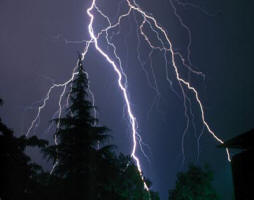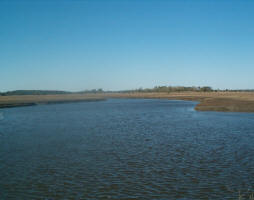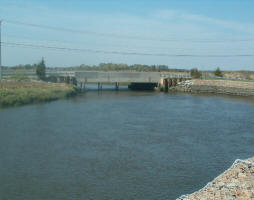 JRC: Contributing to EU water protection efforts
JRC: Contributing to EU water protection efforts
The JRC published two new assessments today on the effectiveness of various measures to improve water availability and water quality by 2030. These assessments were carried out in support of the European Commission's "Blueprint to Safeguard Europe's Water Resources", which was launched today by the Commission's DG Environment. As part of these assessments, a modelling environment was developed to assess optimum combinations of water retention measures, water savings measures, and nutrient reduction measures for continental Europe. Economic costs and benefits were also taken into account. The analyses outline several measures that could lead to improvements in water availability and water quality.
Ensuring good quality water in sufficient quantities for all legitimate uses is a major policy aim of the European Commission, and the main aim of the European Commission's "Blueprint to Safeguard Europe's Water Resources". Within this framework, the Joint Research Centre carries out hydrological simulation modelling research in order to provide scientific assessments of generally available water resources and floods, droughts and water scarcity. The main aim of these research activities is to assess current and future water availability against demands from different economic sectors.
Using state-of-the-art land use projections and hydrochemical modelling, the JRC has developed a modelling environment to assess optimum combinations of water retention measures, water savings measures, and nutrient reduction measures for continental Europe to 2030. Simulations were carried out to assess the effects of these measures on several hydro-chemical indicators, such as the water exploitation index, environmental flow indicators, nitrate and phosphate concentrations in rivers, and flood risk. Economic losses due to water scarcity were also taken into account for the agricultural sector, the manufacturing-industry sector, the energy-production sector and the domestic sector.
The assessments reveal that water-saving measures in households significantly reduce the amounts of water abstracted and consumed. By making more efficient use of water in irrigation, water availability to other sectors and the environment is improved. Water re-use in industry is shown to improve water availability by up to 10%.
Urban greening measures are estimated to reduce flood water levels slightly, leading to a reduction in flood damages in many regions, particularly in Great Britain where a reduction of 27% was estimated. By changing and optimising fertiliser use it is estimated that nitrate and phosphate concentrations will be reduced in all high agriculture regions, in some areas quite dramatically.
Increasing 'room for the river', for example by introducing re-meandering, is estimated to reduce flood peaks in all European regions, and to significantly reduce flood damage potential, by over 10% in the Elbe/Ems and Danube regions for example.
Combined methods of improved crop practices, including reversed/reduced organic matter decline and increased mulching and tillage, are estimated to result in reductions of potential flood damages in all regions, including areas with high absolute flood damages.
The study shows that this modelling software environment can technically deliver optimum scenario combinations of measures that improve various water quantity and quality indicators. However, additional work is needed before final conclusions can be made about using the tool, especially in the areas of economic loss estimations, water prices and price-elasticity, and the implementation and maintenance costs of individual scenarios.
The reports give a unique analysis of the effects of several measures on future water availability and quality in Europe and thus provide a solid foundation for potential measures to be taken by national authorities.
15/11/12
Related Links
- Website: Blueprint to Safeguard Europe's Water Resources
- JRC report: A multi-criteria optimisation of scenarios for the protection of water resources in Europe: Support to the EU Blueprint to Safeguard Europe’s Waters
- JRC report: Evaluation of the effectiveness of Natural Water Retention Measures - Support to the EU Blueprint to Safeguard Europe’s Waters
| Contact information | n/a |
|---|---|
| News type | Inbrief |
| File link |
http://ec.europa.eu/dgs/jrc/index.cfm?id=1410&obj_id=15690&dt_code=NWS&lang=en&ori=HLN |
| Source of information | JRC |
| Keyword(s) | floods, droughts, water scarcity, EU-WFD |
| Subject(s) | AGRICULTURE , ANALYSIS AND TESTS , CHARACTERISTICAL PARAMETERS OF WATERS AND SLUDGES , DRINKING WATER , DRINKING WATER AND SANITATION : COMMON PROCESSES OF PURIFICATION AND TREATMENT , ENERGY , FINANCE-ECONOMY , HEALTH - HYGIENE - PATHOGENIC MICROORGANISM , HYDRAULICS - HYDROLOGY , INDUSTRY , INFORMATION - COMPUTER SCIENCES , MEASUREMENTS AND INSTRUMENTATION , METHTODOLOGY - STATISTICS - DECISION AID , NATURAL MEDIUM , POLICY-WATER POLICY AND WATER MANAGEMENT , PREVENTION AND NUISANCES POLLUTION , RIGHT , RISKS AND CLIMATOLOGY , SANITATION -STRICT PURIFICATION PROCESSES , SLUDGES , WATER DEMAND , WATER QUALITY |
| Relation | http://www.semide.org/initiatives/dce |
| Geographical coverage | n/a |
| News date | 20/11/2012 |
| Working language(s) | ENGLISH |
 you are not logged in
you are not logged in





